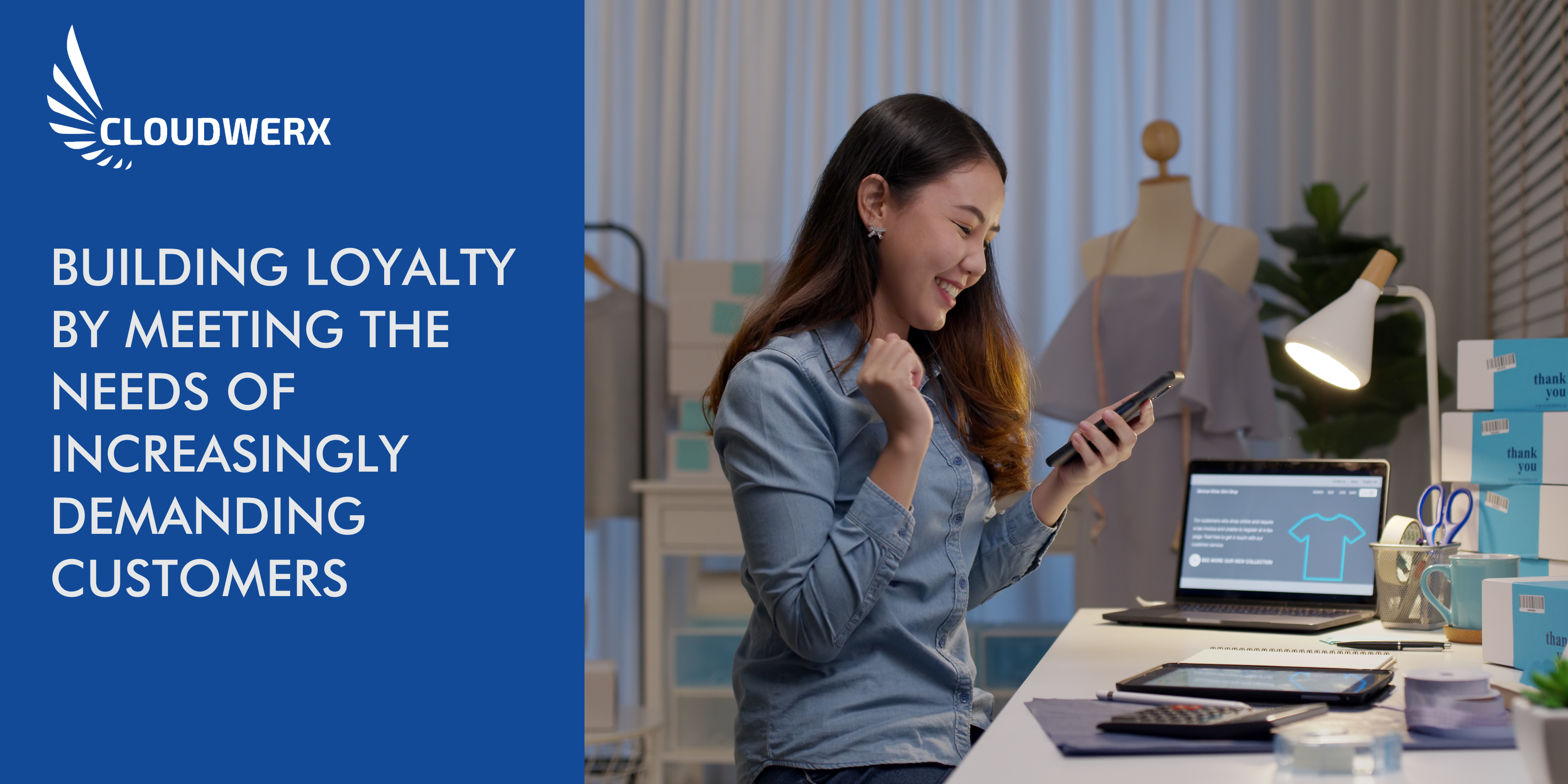
The consumer goods sector is becoming ever-more challenging, and it’s because customer demand has never been higher. Customers not only seek quality products, but they are also very experience-orientated, and want every interaction with a brand, at every touchpoint, to be a positive one. Two-thirds of customers would be happy to switch brands if a competitor offers a better experience.
Logically, then, being the competitor that offers a better experience will not only help you retain your existing customers, but attract and build loyalty with new ones.
And yet, unfortunately, many efforts to improve the customer experience are falling flat. Gartner research shows that most customer experience programs are not delivering on the promise of improving differentiation and helping brands to better compete.
“Being able to demonstrate that your most satisfied customers deliver more growth, margin and lifetime value is important for CMOs in securing resources for CX programs,” Augie Ray, Vice President Analyst in the Gartner Marketing practice, said in the report. “By showing this positive relationship, CX teams are better positioned to prove why CX matters to financial performance and the importance of customer-centric practices to long-term brand health.”
To actually meet the expectations of customers, organisations need to focus their transformation on getting better customer data on to platforms that can leverage automation and AI, and scale as the interactions with customers become more complex.
A staggering 88% of customers now consider the overall experience a company provides to be just as important as the quality of the products themselves. And there’s a useful mantra that every business should keep in mind – “every buyer-by-day is a consumer-by-night.” Consumers need to be able to continue this positive experience with the brands without having to contact a rep or order support, and when they’re browsing and researching products, what they see needs to be personalised to their needs and preferences.
These are all relatively new concepts to the B2B space, but the reality is that B2B is increasingly being challenged to provide a B2C experience. Buyers know the convenience and efficiencies that are available direct to consumers and expect to have those same conveniences when placing their own orders, regardless of the technical challenges that come from delivering that.
“Customer experience isn’t just a B2C issue. To remain relevant and add value, industrial manufacturers and B2B organisations must develop a deep understanding of their customers’ needs and deliver exceptional experiences across the value chain—without sacrificing hard-won efficiencies in cost and responsiveness,” a PwC report notes.
“To achieve the right balance of cost, responsiveness, and experience, B2B companies must expertly map their customers’ journey across the value chain and create an ecosystem to support customer interactions. By embracing a human-centric approach, they learn to apply the right digital capabilities, at the right times, to deliver on the most important customer promises.”
This is what we focus on delivering to consumer goods organisations at Cloudwerx. With a focus on people, process, and technology, in that order, we are aligned with the customer-centric approach that drives loyalty in modern commerce. We use that expertise to guide businesses through a journey that starts with understanding their unique needs and ends with delivering exceptional customer experiences.
An all-in-one commerce approach offers several advantages that contribute to enhancing customer loyalty and driving operational efficiency:
There’s one single statistic that a company, if it were to drive it down to 0%, would see a massive spike in loyalty: 60% of consumers generally feel like they’re communicating with separate departments, rather than a single company.
Loyalty comes from feeling like you’re understood and being treated with individual care. In other words, businesses need a clear view of every phase of the customer journey, from discovery to delivery. Within most organisations there are siloed workflows that can cause disruption, confusion and ultimately frustration. Facilitating a single platform of data that all systems draw from, and therefore ensuring that all systems have access to the same data in real time, is the only way to ensure that there’s a single understanding of each customer at each stage of interaction.
As businesses grow, their ecommerce, order management, and payment systems must scale accordingly. An all-in-one approach ensures that these systems can evolve with your business needs. Whether you’re expanding into new markets, adding new payment methods, or keeping up with order management trends, establishing that foundation that can be added to, rather than requiring entirely new and disjointed systems be set up each time, is an essential step.
The three biggest challenges that all organisations involved in commerce face are, according to the Salesforce State of Commerce report:
Implementing disparate products from multiple vendors can be time-consuming and costly, and, if not managed well, ultimately result in a failure of the system to deliver its expected value. Managing contracts, vendor relationships, and maintenance for each product can strain IT resources. In contrast, the kind of solutions that Cloudwerx delivers streamline all these processes and deliver the implementation with expertise.
For example, it’s possible to reduce IT development time by 75% by integrating order management, payments, and ecommerce. This efficiency allows IT teams to refocus on building customisations that enhance customer experiences, ultimately driving satisfaction and loyalty. As the Salesforce report highlights, the three biggest priorities are:
Being able to focus on these means, first, not having to worry about addressing the challenges.
To be able to maximise the ROI in leveraging an all-in-one solution to drive customer loyalty, businesses should look for a partner that can help deliver four key priorities:
As Forrester notes, 53% of marketing decision-makers plan to increase their spending on loyalty technology this year. However, this is being made problematic by the ongoing economic uncertainty. Marketers will need to demonstrate profitability and a short ROI. Achieving this, according to Forrester, requires:
The platform and foundation itself need to be secure and agile, and offer out-of-the-box tools and features like content management and storefront search. Uptime is also critical, so partner with a company like Cloudwerx, known for delivering high availability to avoid expensive outages.
According to Gartner, 83% of B2B buyers prefer ordering or paying through digital commerce. As the report notes, though, this is an area of significant opportunity for companies, because it’s an area that many of their competitors do poorly: “Currently, the two levers available to commercial organisations — digital commerce and sales rep interactions — are failing B2B buyers and eroding commercial value. Compared to traditional buyers, digital commerce buyers are significantly more likely to experience purchase regret. When buyers report their purchase process was primarily led by sales reps (as opposed to self-navigated), they make lower-quality purchase decisions. Only 24% of B2B buyers in primarily sales rep-led purchases completed a high-quality deal, versus 65% of B2B buyers who self-navigated the purchase process.”
Another good example of just how important the user experience is can be seen with banks, whose entire business relies on customers using its payments platform. According to research by PwC, 40% of people prefer to use non-banking financial applications as they provide a “better user-friendly experience.” For those in B2B commerce, it is critical to make sure that the payments solution is not only secure, but it’s also convenient and feature-rich to ensure that the final interaction with company is a positive one.
A payments solution should prioritise user experience, localisation, and fraud prevention. Look for solutions that use machine learning and dynamic authentication to detect and prevent fraud and give you real-time insights into the process, without also compromising the user experience in making a payment.
Seamless integration between each line of business, including commerce, service, sales, and marketing, is essential. A good order management solution consolidates customer and order data, streamlining processes and reducing costs.
At Cloudwerx, we offer Salesforce All-in-One Commerce, providing businesses with out-of-the-box capabilities to power their online presence from day one. Our solution scales with your growth, ensuring uptime and enabling the launch of trusted payment methods.
If you are interested in working with Cloudwerx, please reach out to hello@cloudwerx.com. We offer free consultations, and would love to hear about your business.





Realise the full potential of your CRM